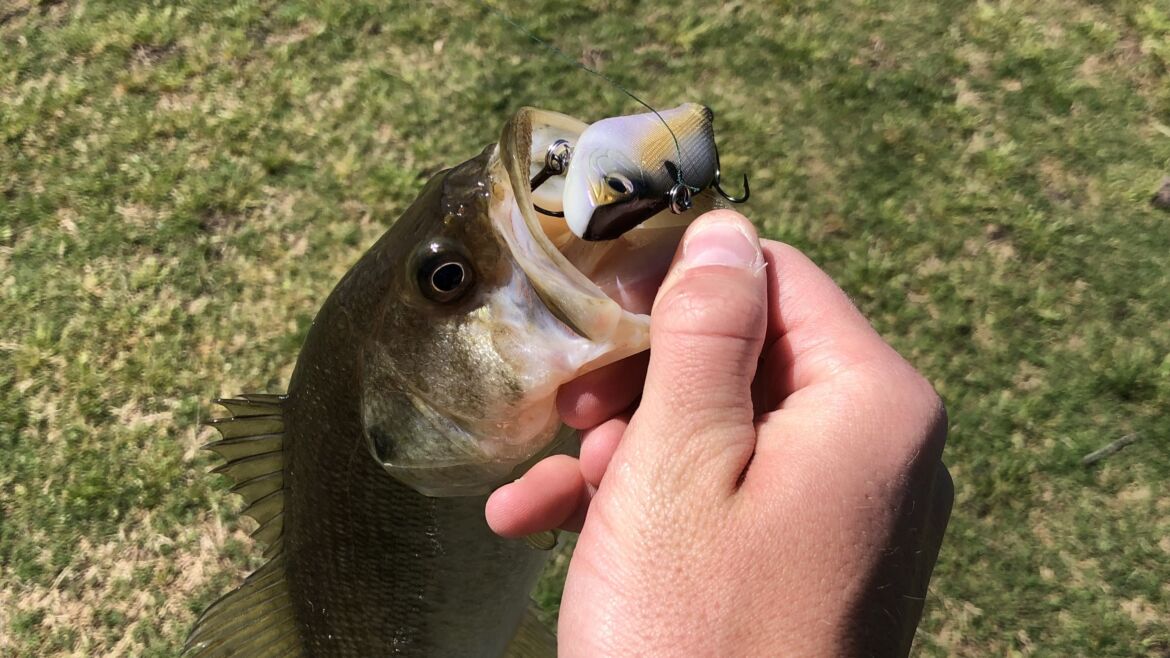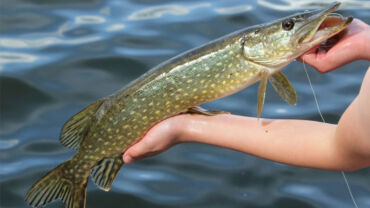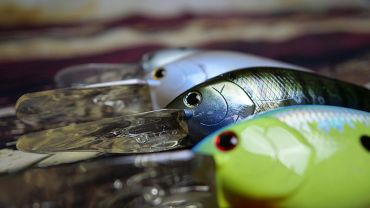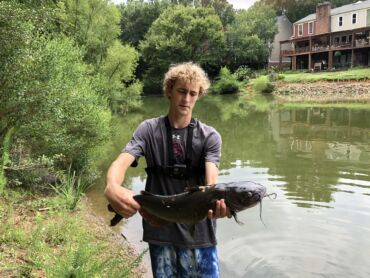Fishing with a jig is one of the most popular ways to fish for largemouth bass around the world. It offers unparalleled and unique action on the bottom and is specifically designed for bumping into structures on the bottom where bass can be hiding. Jig fishing provides bass anglers a way to get down deep into the habitat of the bass when the rest of the water column can be a struggle with other different baits.
In this article, we are going to go over the basics of jig fishing and give a lot of details as to how you can be more successful on the water when fishing these awesome baits. As I always say, reading is a great way to get more acquainted with the subject, but fishing requires much more research and time on the water to get very good at what you do.
This being said, a helpful tool I like to use is the Fishbox app which gives anglers fishing data and predictions designed to make your day on the water more enjoyable. Using around 50 metrics, the Fishbox app accurately provides predictions that you can easily see and use for your benefit on the water. So don’t wait and download the Fishbox app today. Let’s jump straight into the article.
Get your personalized fishing map
Answer a quick quiz and get your own personalized fishing map
What is a Jig in Fishing?
A jig is basically a coated lead or tungsten ball attached to a hook that often has a skirt and weed guard. It is designed to imitate some creature on the bottom like a crawfish or even a swimming baitfish. There are also quite a few different types of jigs. For starters, the swim jig is designed to move through the water and swim as the name suggests. There is the flipping jig which is designed to pitch or flip into a tight structure with things like roots and docks. Additionally, there is the football jig which was designed to crawl and scrape over dense hard bottoms without being able to get snagged. They essentially stir up the bottom so a fish can come to find them. Lastly, there is the finesse jig, which is meant to convince a lethargic, cold-water bass to strike.
Benefits of Jig Fishing
There are quite a few benefits to jig fishing but one of the biggest is that the jig has unparalleled access to deep structure unlike any other bait out there. Now yes, you can use jigs in a lot of different applications in various structures, but the majority of the time, you are using a jig to fish heavy structures on the bottom. This strategy is absolutely lethal for deep-dwelling largemouth bass or bass that love to sit deep in cover like roots or rocky bottoms.
The advantage to a jig over other deep-water baits like a crankbait is that it doesn’t get snagged nearly as often. The weed guard and the way you fish the bait allow you to roll over most structures to ensure you’re going to find the fish without having to worry as much about losing your lure. Take for example a deep diving crankbait. If you see deep structure towards the bottom or structure near the shore and you throw that crankbait at it, chances are it’s gonna get snagged—the jig won’t a lot of the time. You could also throw a soft plastic, but it won’t give that distinct bump-and-run action like a jig will. So even though the soft plastics might not get snagged if rigged correctly, you will still have better action with a jig. I hope even from this little bit that you can see the distinct advantages that jig fishing offers bass anglers.
Read also: When Do Bass Spawn: A Comprehensive Guide to Bass Spawning Season
How to Fish a Jig
- Step-by-step guide on how to fish with a jig.
When jig fishing, the first thing you’re going to want to do is identify the structure you want to fish. The jig isn’t so much an all-around bait in the sense that it can be used wherever. For best results, identify areas of cover in the water whether it be logs, weeds, rocks, etc. Once you have identified these areas, begin casting in and around them working your bait slowly until that fish hits. Think like a bass. For example, “If I were a bass, I would hide in that deep pile of sticks.” Use this rationale to your advantage while jig fishing.
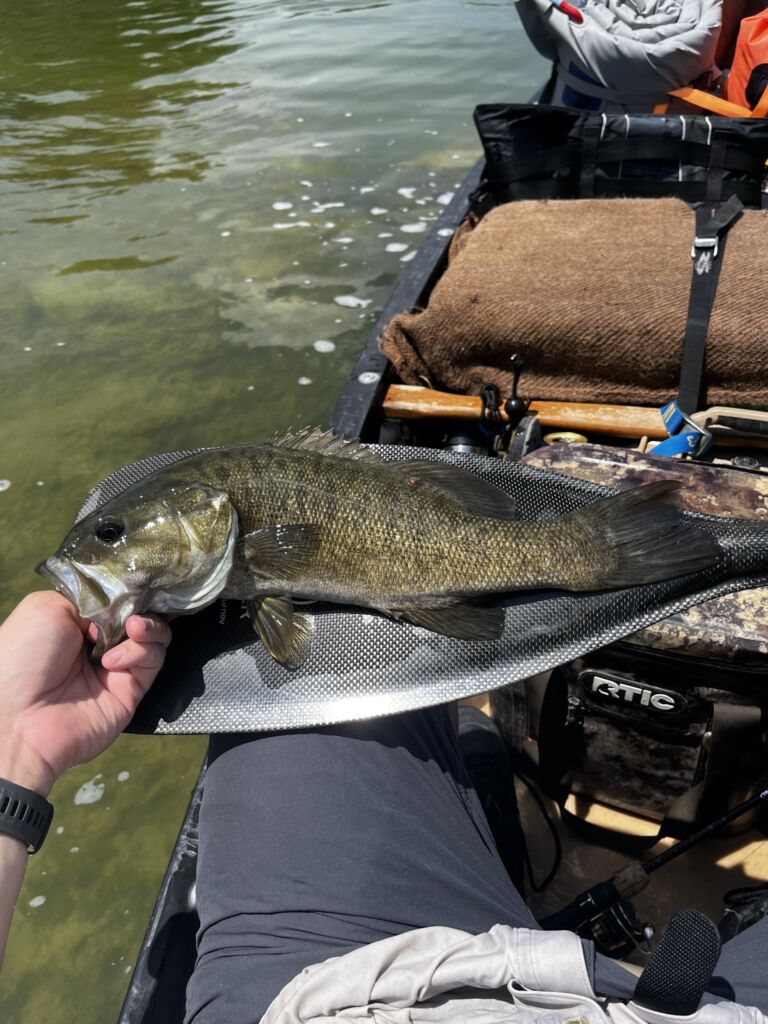
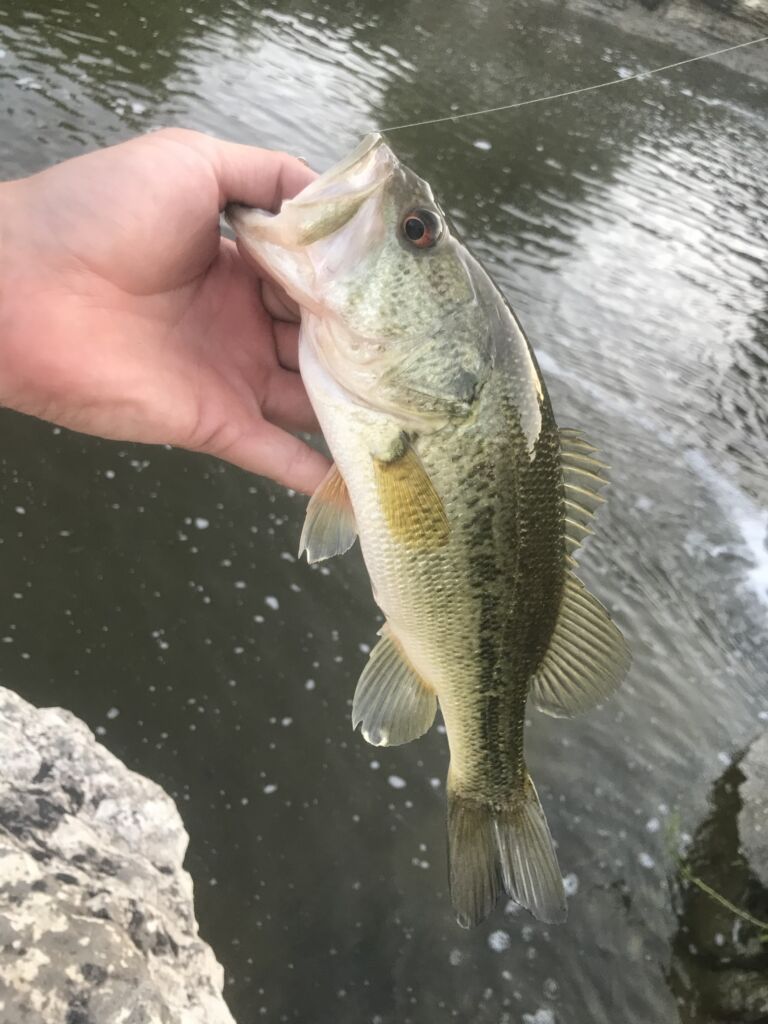
- Techniques for casting, retrieving, and movement.
You can cast just like you would any other bait if you are in an open area, however, if you’re fishing from a crowded and overgrown bank, you may need to simply pitch or flip your jig out there underhand—get creative with your approach. The retrieve is going to be slightly more complicated because of the different ways you can do it. Additionally, it is important to vary these retrieves because you never know what the fish will want.
First, there is just the straight retrieve, dragging it across the bottom. There is also a jerk retrieve where you drag across the bottom and occasionally jerk the tip of your rod to make that jig move a little bit more. Another popular retrieve is the bounce retrieve where you give your rod a little bounce and bring that jig off the bottom to elicit a strike. Just remember, your actions can’t be too hard especially when fishing heavy cover. If you move too fast or hard, you may end up with a snagged jig so just be careful.
- Tips for setting the hook.
There is absolutely no reason to slam the hook home and rip the jaw off a bass. You can give your rod a little swing instead. Oftentimes, you can’t tell the size of the fish when it bumps your bait so you don’t need to rip the fish out of the water—a gentle hookset will be fine—just remember to keep your hooks sharp so this works.
The only other tip I would give is that sometimes when you hit a piece of structure it can feel very similar to a fish. If you set hard on a piece of structure, you will snag your lure and likely break your line. So be careful when setting and make sure your set is appropriate.
How to Use a Jig: Techniques and Tips
- Importance of different jigging techniques (e.g., casting and dragging, hopping).
As I just discussed above, there are a variety of different jigging techniques. For this article, I wanted to specifically focus on freshwater jigging for bass as this is the most popular form of jigging in the United States. Knowing how to jig differently is essential to your success when fishing so it is imperative you learn how to jig well.
Additionally, it is extremely helpful to see how a jig functions underwater. Look up videos online on the functionality of a jig to familiarize yourself with its action and how it will react to structure underwater.
Read also: Maximize Your Catch: Guide to the Best Freshwater Fishing Baits
- When to use each technique based on conditions and target species.
Since I am specifically focusing on bass today, I will talk about these techniques with regard to this species. You really want to use jigs to attack deeper water, specifically in the colder months when bass are slow and lethargic. This is where you’ll need to put a slow-moving bait right in front of them in order to get a strike. Additionally, jigs can also be used in deep and shallow water in the summer in shady spots where there is structure.
Just remember that jigs need to be slow-moving. The prey you’re trying to imitate is not fast. Crawfish literally crawl across the bottom, so there’s no need for it to be fast.
- Common mistakes to avoid while jig fishing.
One of the most common mistakes I see when people fish with jigs is that their retrieve is way too quick. As I just mentioned, jig fishing is all about being slow and bouncing off as much structure as possible. One of the other common mistakes I see people make is setting the hook too hard and either breaking their line off on the structure or hurting the fish because they are too violent with the hook set. Be mindful of what you could be hooked into. Also, I promise you can take a little off your set and still be perfectly fine in setting the hook.
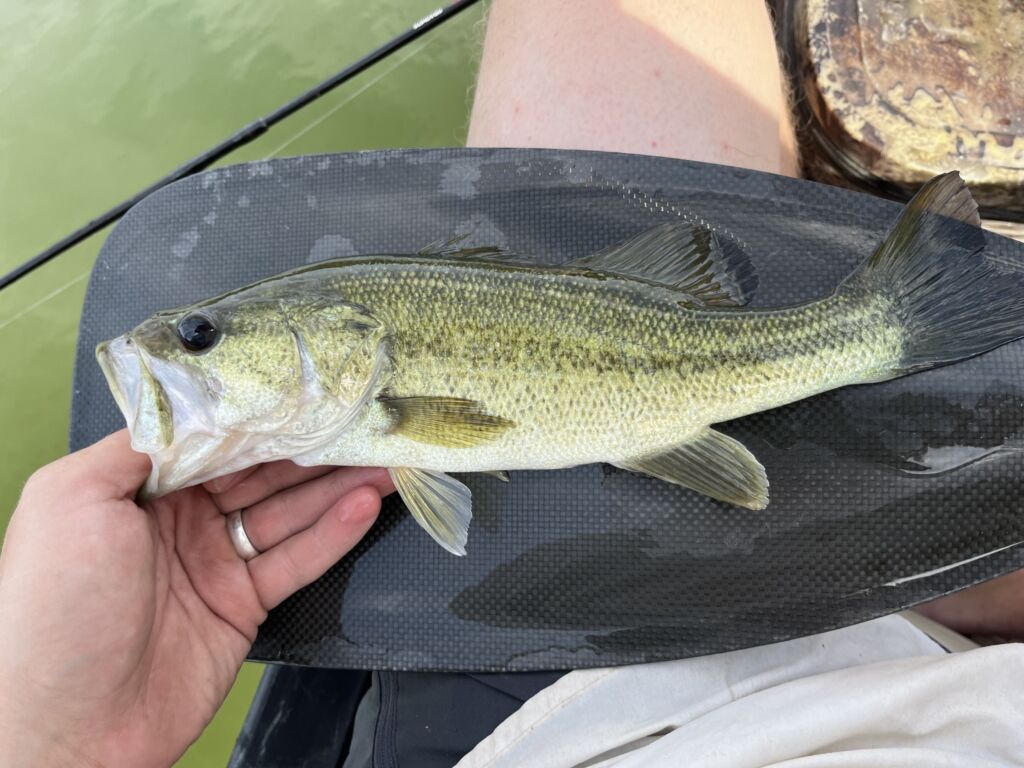
Jig Fishing for Beginners
- Beginner-friendly tips and advice.
Getting great at jig fishing requires a lot of time, effort, and practice. I can assure you I’m still not where I want to be with my own skill in jig fishing and I’ve been doing it for years. So, when you’re just starting to get into jigs, I would recommend buying cheaper ones first. That way when you inevitably break one off, it won’t be like losing a fortune.
Additionally, I would suggest using a lighter rod—one that you can feel small bumps with. When that fish bites your jig, all he’s gonna do is just open his mouth on top of it and just slurp it up—he’s not normally gonna just take it and run. Be mindful of this and pay attention to the littlest of bumps.
One more thing, not every bump or bounce is a fish. A lot of people will just be getting into jig fishing, and they’ll cast their jig into the structure and think it’s a fish on every bump—it’s not. You must spend time on the water and practice in order to really know the difference between a branch and a bite. And yes, I still do this.
- How to choose the right jig for a beginner.
I would suggest using a dark-colored jig, something like a green pumpkin, and make sure it is around 3/8 or ½ ounces. Additionally, if you know your water is a little shallower, choose a light jig and if it’s a little deeper choose a heavy jig. My go-to jig is always a football jig as I think it is the easiest to fish and avoid snags with. In darker water go with baits that are darker and in clearer water go with colors that are more natural like your watermelons, pumpkins, etc.
Selecting the Right Jig
- How to choose the right jig based on water conditions (clear vs. murky, shallow vs. deep).
Let’s start with depth. This is a very simple equation: If the water is deeper, you want to be using a heavy jig. If the water is shallower, you want to use a light jig. Like I just said, for murky, darker waters use dark colors—blacks, purples, deep reds, etc. For cleaner, clearer water use natural colors like watermelon, green pumpkin, etc.
- Matching jigs with the appropriate rod, reel, and line.
I mentioned this a little above, but you want a lighter more sensitive rod when jig fishing as it can allow you to identify a bite more easily. If you are fishing from a tight bank, you may want to use a smaller rod but aside from that, it’s really all preference and what you’re comfortable with using. The only other thing I would mention is line. I personally prefer braids and something 20 pounds and heavier. That way if I do get snagged there is a chance I can pull my jig out with brute force. This is simply my preference though.
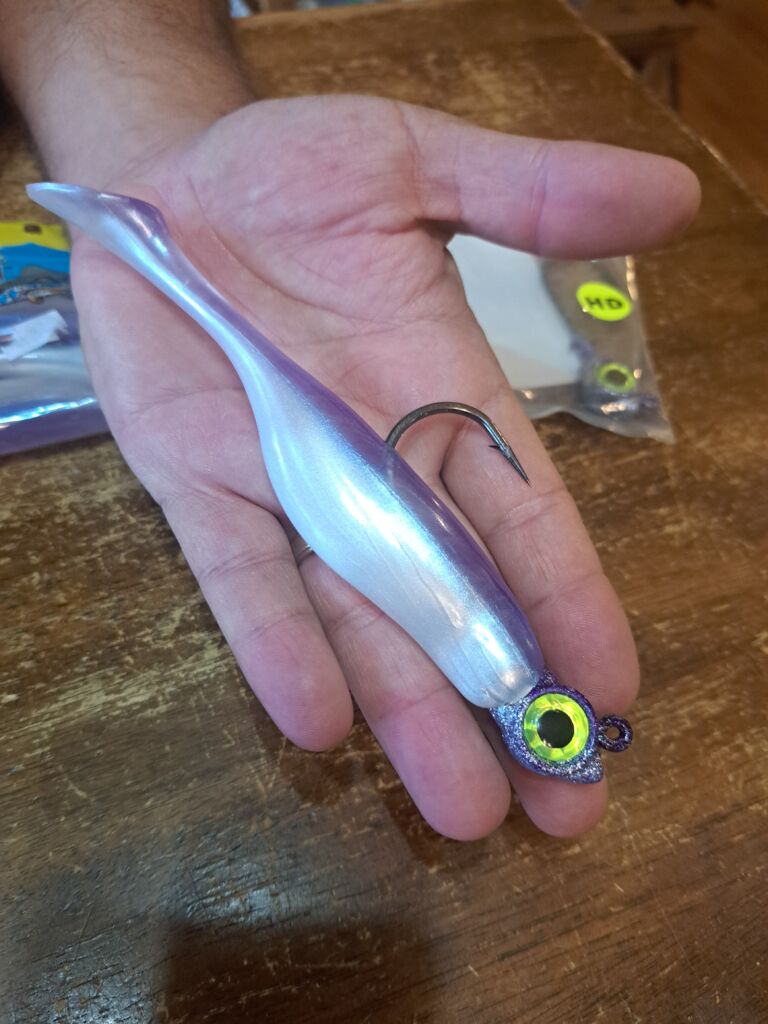
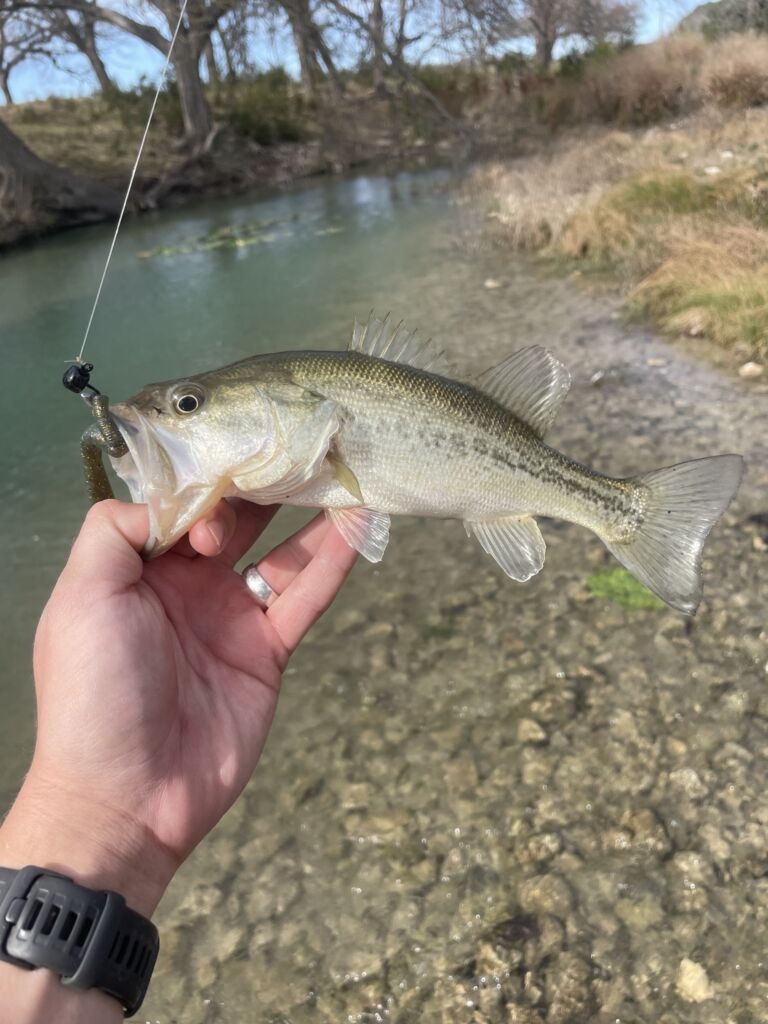
Jig Bait Fishing
- How to pair jigs with different types of bait.
For the most part, if people fish a jig with another bait, it’s almost always some kind of soft plastic trailer. This can be many different things and it’s a lot of preference, however, most anglers prefer some kind of crawfish threaded on the jig so that the claws face away from the front of the bait. This gives the bass the illusion of a fleeing crawfish which can elicit a bite. Now obviously there are a ton of other soft plastics out there, but the most popular trailers paired with jigs are going to be crawfish. Additionally, try to match your crawfish color with your jig or with a complementary color.
Get your personalized fishing map
Answer a quick quiz and get your own personalized fishing map
Conclusion
I hope you guys have enjoyed reading this article and now feel a little bit more confident about approaching bass fishing with a jig. Just remember practice, practice, practice. It takes time and effort in order to get good at anything so make sure to work at this skill. Be safe on the water and as always, good luck and tight lines!
